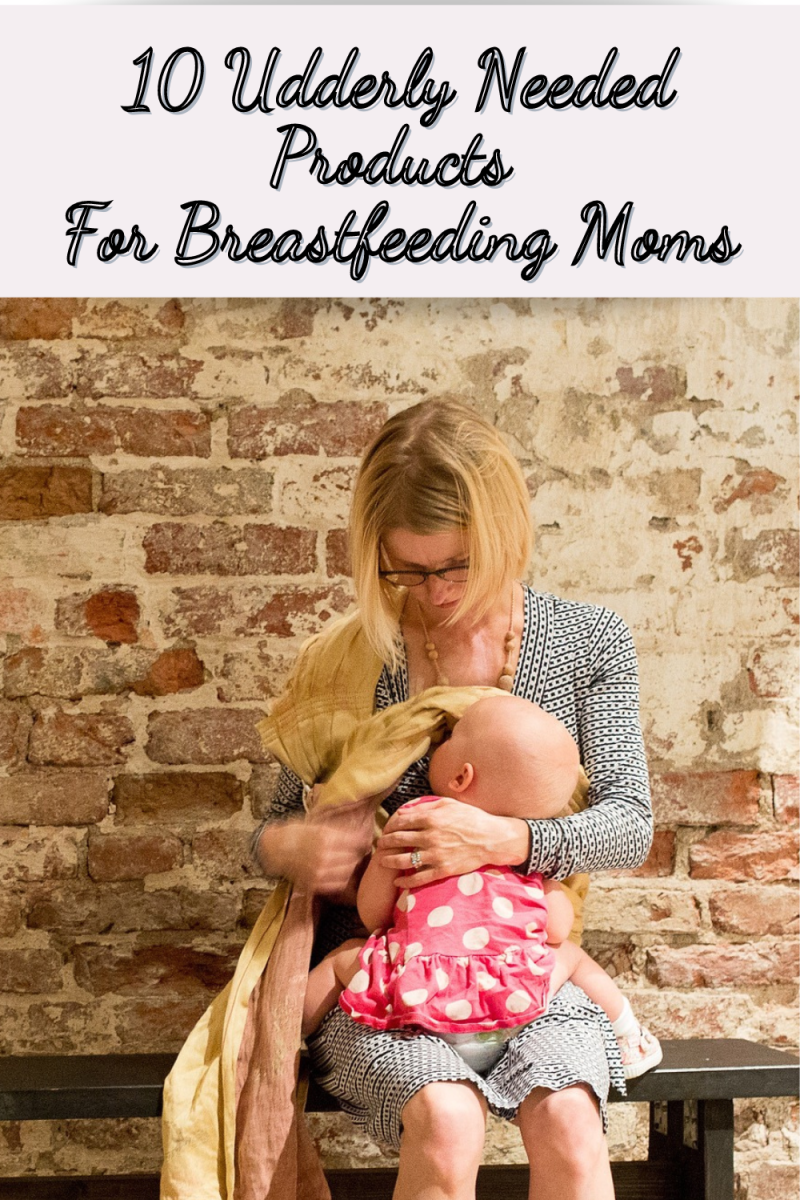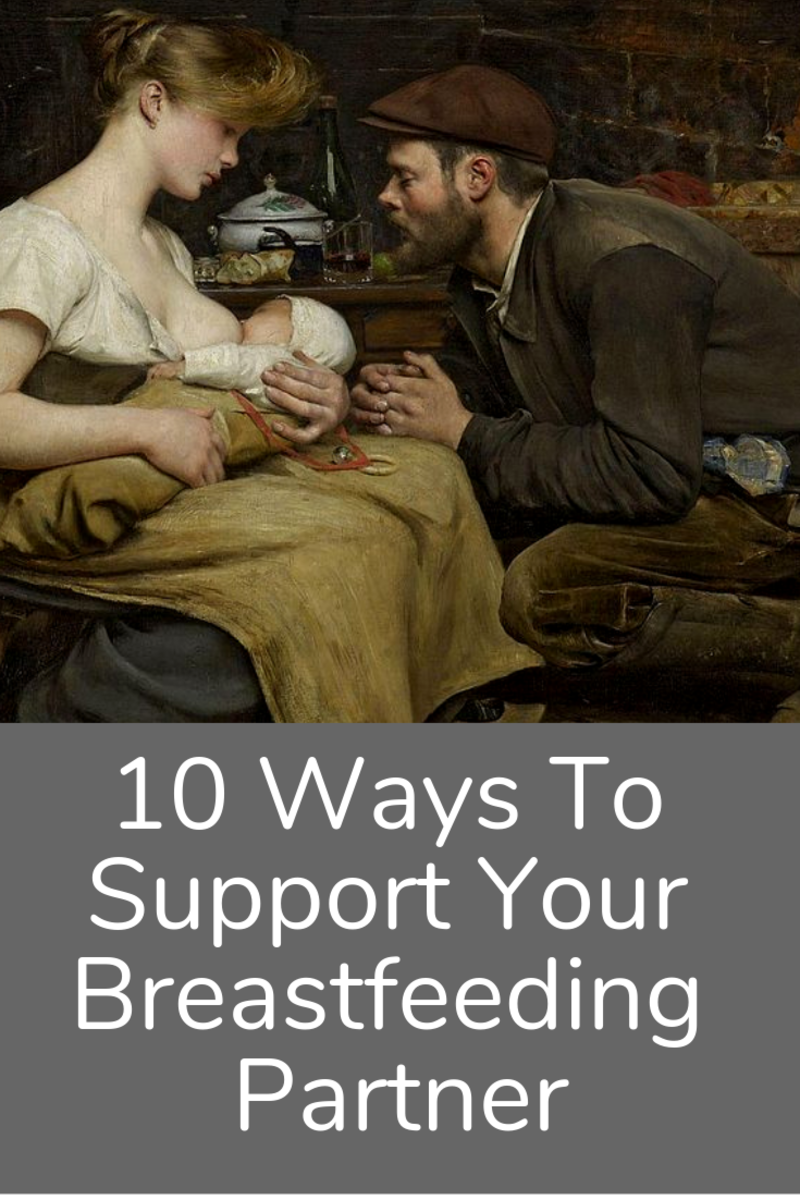Breastfeeding Problems, How To Increase Milk Supply and Breastfeed Successfully
- 4 Easy Steps How to Wean From Breastfeeding
How to stop breastfeeding and how to wean from breastfeeding gradually. Follow 4 easy steps for successful weaning from breastfeeding. - How to Have Attractive Breasts after Breastfeeding
Are saggy breasts after breastfeeding everyones reality? It doesn't have to be. Find out how you can have sexy and attractive breasts after breastfeeding. - What Is Rooming In And Why (Not) To Choose It
Rooming-in in hospitals and birth centres can be a great start for you and your baby. Here you will find useful information about rooimng in, what is good and what could be bad if you decided to have it.
Breastfeeding is the most wonderful thing in a young mother’s life. If you are pregnant you may think that breastfeeding is natural by itself, not very difficult, definitely not impossible, and the most important, very healthy. You also know all about benefits of breastfeeding and different positions. You are prepared and ready for that special task.
But, if you are already a mother, either very young, either experienced one, you know very well that most woman have breastfeeding problems and are forced to switch to bottle feeding. You are also aware of breastfeeding benefits, but at the same time feel that breastfeeding problems, especially low milk supply, are difficult to overcome.
Is it really the truth that some women cannot breastfeed or they give up too early?
My breastfeeding story
When I was 8 months pregnant I started reading about breastfeeding. I also took a course about breastfeeding to hear some practical tips and advice from experienced moms in order to avoid breastfeeding problems.
My wish was to breastfeed at least a year and a half. Longer breastfeeding was also an option if that suited me and my baby.
But, when I gave birth to my daughter things started going in the opposite direction to the one I wanted. My baby was relatively small (something over 3kg) and wasn’t very interested in active sucking. I wanted rooming-in arrangement, to have her beside me all the time but that didn't prevent my breastfeeding problems. When we came home, the situation didn’t improve much. She would suck two or three times and “fall a sleep”.
My family concluded that she was hungry, I had low milk supply and I should start bottle feeding. I struggled for two weeks and finally gave her the milk formula, because I didn’t want her to be hungry and crying all the time.
But, I decided to overcome my breastfeeding problems and do whatever it takes to reduce bottle feeding and increase breastfeeding.
In order to start increasing milk supply I breastfed her on demand, which in my case meant she was on my breasts all the time. Sometimes I would let her breastfeed every 15 minutes, sometimes she would breastfeed for two hours and sleep in my lap.
After two months, my breastfeeding problems seem to be over. Milk supply increased but I stated experiencing problems with my breasts. My milk ducts were plugged almost all the time, every few days in different place. But I was so happy and proud, because I started to breastfeed her exclusively after two months.
I still breastfeed her and she is 14 months old now. It looks like I will reach those 18 months that I originally wished. The moments when I breastfeed her are very special to us and I just don’t want to give them up yet!
Additional Tips For Breastfeeding
- How to breastfeed a baby
Find information on breastfeeding, how to breastfeed a baby, breastfeeding positions, breastfeeding basics and breastfeeding problems/concerns. - How To Increase Breast milk Supply
Many women who breastfeed, at one point or another, have a problem with low breastmilk supply and look for or need a way to help increase their breast milk supply. So, start off by knowing you are not alone! ... - How To Increase Breast Milk Supply
Women are built for breastfeeding. Your age, weight or cup size dont affect your breast milk supply. If you ask the experts at La Leche League, they will tell you it is very rare for the female body to not...
How to Breastfeed Successfully
- Increasing breast milk supply. One among many breastfeeding problems is low milk supply. If you don’t have any milk during the first day, try expressing milk manually or using the breast pump. That might increase lactation and ease your breastfeeding broblems. Even if it’s only a drop or two, it’s enough during the first few days. Simulate baby’s sucking (it’s good to do it every time while expressing milk), press quickly three or four times and after that pres slowly and let go after several seconds. Even if you have rooming-in, that doesn’t necessarily mean you baby will increase milk supply. Your baby might be small, sleepy or just lazy for breastfeeding, so it’s good to help the milk production with expressing milk from time to time.
- Breastfeed on demand. Let your baby breastfeed whenever it asks. Even if it’s every half an hour, do it. It’s very hard and exhausting, but this could be the only way to increase the milk supply and solve your breastfeeding problems. Even if you baby ate all the milk, let it suck as long as it wants, because sucking itself has a positive influence on milk supply. It’s worth spending most of your time breastfeeding during first months and being nothing but mom, because after a short time you will enjoy breastfeeding endlessly and have enough time to rest.
- Expressing milk after feeding. Sometimes, you baby will not eat the entire milk, and some of it may be left in your breasts. This is why it’s good to express the remaining milk and that way increase milk production for the next feeding.
- Breastfeed more in the afternoon and evening. When the day is coming to an end, most women are experiencing breastfeeding broblems, such as low milk supply. The baby asks for even more time on your breasts and sleeps shorter intervals than during the first part of the day. This is normal, because milk supply decreases when the day goes by. Let your baby spend as much time breastfeed as you can handle and don’t reach for the bottle. More frequent breastfeeding in the evening will keep your milk supply at the satisfactory level.
- Breastfeed while you sleep. Milk production is the highest during night hours, because prolactin rises during the night. Prolactin is a hormone responsible for milk production in breastfeeding moms. The more you breastfeed during the night, the more milk you’ll have in general. Similar affect has a daily nap. Use daily naps to have some rest, cuddle with your baby and increase your milk supply at the same time.
Breastfeeding benefits
- Child’s immunity. Breastfeeding is mainly recommended because it increases baby immune system. It’s well known that children who were breastfed during first year have better immune systems. The reason for this is that mother’s milk contains antibodies, which protect the young child’s immune system. When mother is sick, it is also recommended to breastfeed, because she will give her antibodies to her child and protect it from the same illness.
- Losing weight. Mother who breastfeed lose weight quickly than the mother who don’t. Breastfeeding causes a uterine shrinking. That’s why breastfeeding moms look thinner and go back to their previous weight quicker.
- Bonding with child. Breastfeeding is the most beautiful time you can spend with your baby during first months. You will be calmed, because your baby will be peaceful and content. Your child will be close to you and feel your warmth and closeness. And, that’s one of the most important things a baby need to experience and one of the benefits of breastfeeding.
- Great sleeping association. Little babies need associations for falling asleep. A newborn associates food with sleeping and falls a sleep right after eating, sometimes during eating. A few months old baby associates sleeping with breastfeeding, sucking, carrying or swinging. Breastfeeding is great sleeping association, so don’t hurry to wean your baby from breastfeeding.
- Putting to sleep takes a few minutes. When your baby is over six months old, it is well aware of its environment. It sees and hears everything. It could be a challenge to put it a sleep without breastfeeding or soother. In that case, some carrying will be necessary, which can sometimes take over half an hour. Putting to sleep during breastfeeding is quicker and baby is a sleep within several minutes. This kind of sleeping won’t last forever, you child will grow up in no time, so why spend your evenings fighting over sleeping, when you and your child can spend a peaceful time together at the end of the day and then have some relaxing time for yourself.
- Stressful periods are easier to handle. If you and your baby are going through some rough period (a women coming back to work, child being ill or in hospital), it could be handled much easily if you breastfeed. Your child will use those moments to recover from stressful periods and be less prone to possible illnesses or negative reactions.
- Breastfeeding time could be used for relaxing. If your baby eats for an hour or longer, or even had short naps in your lap, you can spend this time doing something relaxing. You will probably want to use the time when you don’t have to take care of your baby differently, for example have shower, do some housework or spend some time with your partner. But, you can use this extra time of peace to read a book or watch your favorite TV show or a movie, which you couldn’t do if you bottle fed your baby.
- Breastfeeding is natural contraception. While you breastfeed, especially during the night, you are not likely to have ovulation and get your period. If you’re not planning another child right now, you don’t have to worry much about getting pregnant (if you’re not unlucky to conceive during the ovulation before your first period, which is always a possibility).
Breastfeeding Tips
- Massage your breasts daily. To avoid most common breastfeeding problems, such as mastitis or plugged ducts massage your breasts on daily basis. It good to do it during your morning shower. Take some of your shower gel (generally there is no need to use shower gel on breast area, plain water is enough) and massage your breasts all over. Spend more time on the area with previous inflammatory processes. This should help at least decrease the number of inflammatory processes, if not eliminate them completely.
- Plugged milk ducts. Another very usual breastfeeding problem is having plugged milk ducts and hard bumps in your breast. If you start experiencing this problem, it’s good to put some cold compress on your breast. If you don’t have any compress a frozen peas can help. Take the peas from its original package and put some of it in the small plastic bag (depending on the size of your breast). The bag will cover the breast naturally and reduce the inflammation a bit. But, if you plan to breastfeed, have a worm shower, massage the breast and let the baby eat. Let you baby breastfeed more often than usual. You can do this a few times a day, until the bump is gone. Usually, it takes a few days for the bump to disappear completely.
- Help your baby eat. If your milk doesn’t flow smoothly, it would be a good idea to squeeze your breasts easily during breastfeeding, to help the milk flow through the ducts. That way your baby will get more milk out of your breasts and more will be produced for the next breastfeeding.
- Adjust easily to development jump. There are some special periods in your baby’s development, called development jump. During those periods your baby grows much faster than usual, and thus needs a lot more milk to be full. Don’t misunderstand those periods with sudden low milk supply. Instead, let your baby breastfeed as often as you can or breastfeed on demand and you will increase lactation. In a day or two everything will be back to normal and your baby will have its usual eating intervals. If you breastfeed on demand during those periods, you baby will naturally influence on increasing milk supply and prevent possible breastfeeding problems. Development jump happens at two and six weeks and three and six months.
- Drink breastfeeding tea and juice. It is not recommended to give your babyanything besides milk until it is six months old. But, if you notice your baby has cramps or some digestive problems, you can take special tea, which can help you baby. Usually, it’s fennel, anise and/or cumin tea. And to stay in a better state, it’s good to take some breastfeeding juice on daily basis. Your baby takes vitamins and minerals from your body, so it’s necessary to compensate them. Those juices have special combination of minerals and vitamins that a breastfeeding woman needs, such as folic acid, calcium, iron, C and B vitamin, zinc, biotin and so on.
Most breastfeeding problems can be solved. My breastfeeding story ended up in success. If you are persistent enough, you can increase lactation and minimize the difficulties of low milk supply. Breastfeeding benefits are numerous and if you enjoy doing it as much as your baby does, that’s the best thing you can give your child during the first year of its life.



